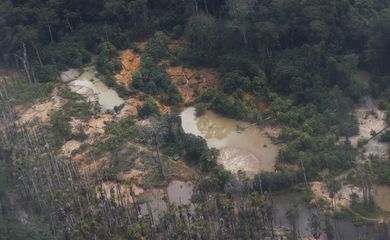Brazilian scientists identify biological markers that react to mercury

Brazilian scientists are making progress in their research to identify mercury in contaminated organisms in the Amazon. In humans, the heavy metal used in mining can cause neurological problems and muscle weakness, and may even lead to death.

Over the last decade, a group coordinated by Pedro Padilha, from the Biosciences Institute at São Paulo State University (Unesp), has been studying a technique named metalloproteomics. It makes it possible to observe the connection between metals—such as iron, copper, lead, and mercury—and large molecules—like proteins and enzymes.
The detection of these biological markers, which react to the presence of the metal, should enable preventive efforts to be taken, reducing illnesses and health costs, he noted. Researchers have until 2025 to present the final results, Padilha added.
The presence of mercury in Amazon fish is linked not only to mining, but also to the construction of hydroelectric plants that can move stagnant mercury at the bottom of rivers, such as the Madeira river, one of the tributaries of the Amazon river. Even the Negro river, a tributary less directly impacted, already has high concentrations of mercury, Padilha went on to point out.
Research shows that one fifth of the fish consumed in urban centers in the Amazon have levels of mercury in their muscle tissue above the limit recommended by the UN and national health authorities.






